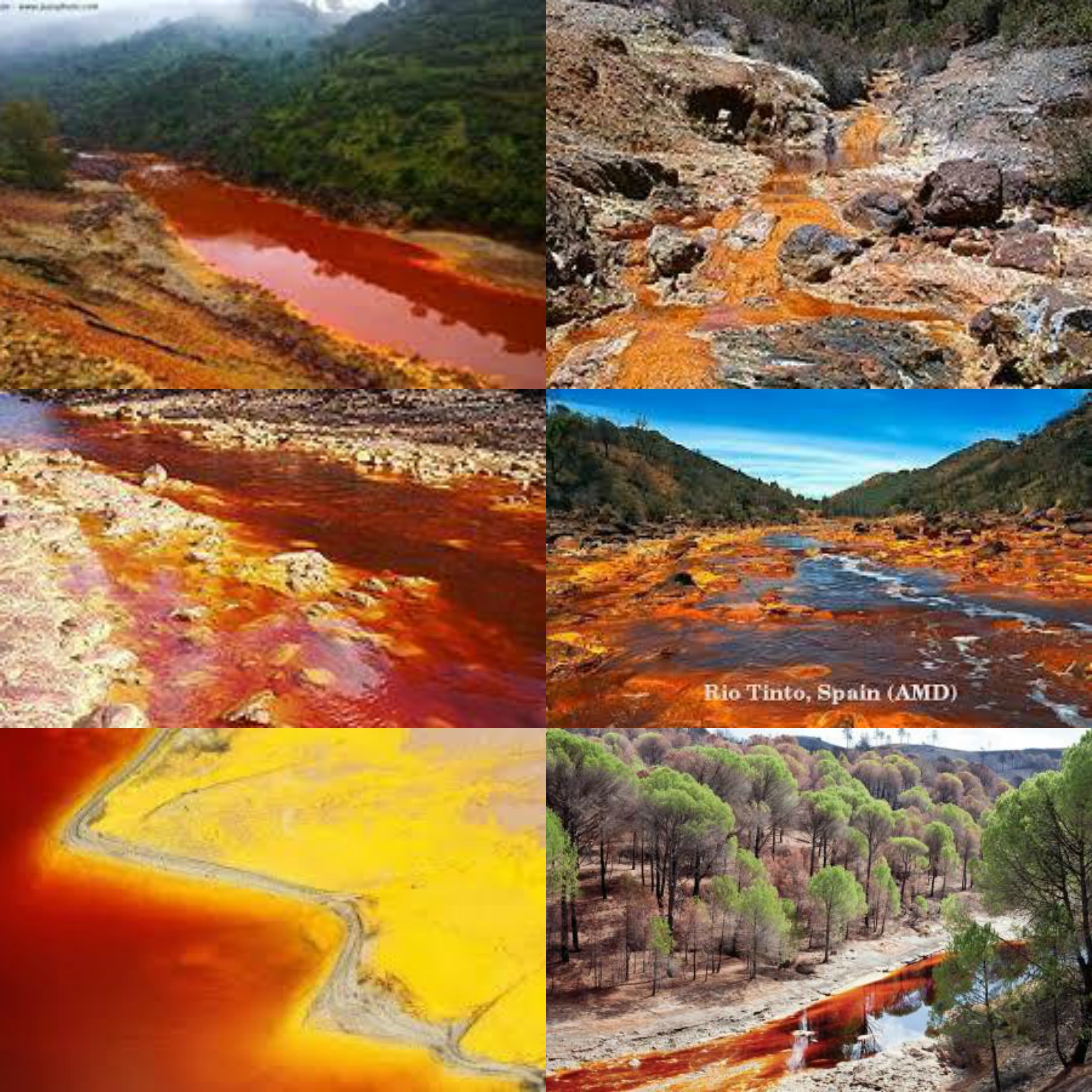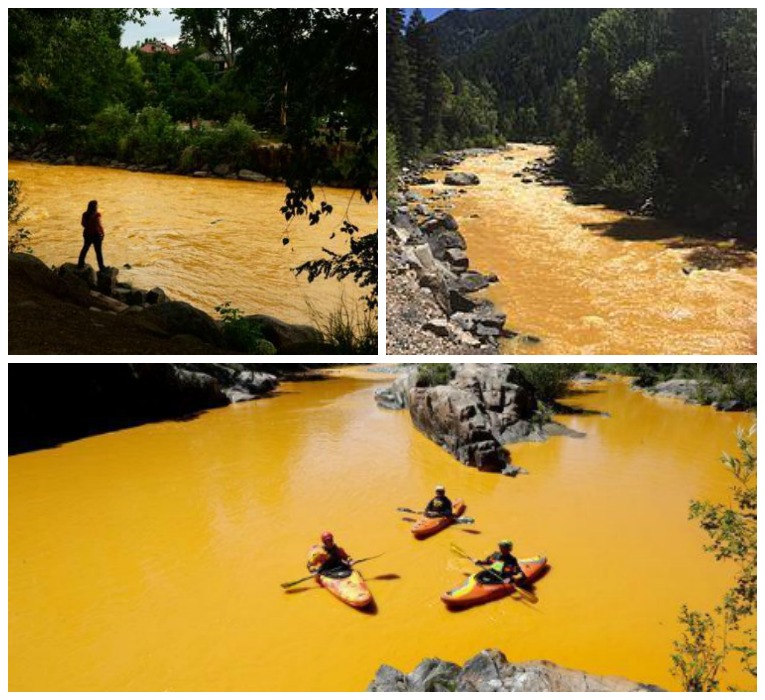Reckless Endangerment of Northern Minnesota by Foreign Mining Companies: Part II
By Gary G. Kohls, MD, guest to Natural Blaze
A Photo Gallery of Seven Preventable, Catastrophic Tailings Ponds Disasters Related to Hard Rock Mining (and one pipeline disaster)
(If a Picture is Worth a Thousand Words, the DNR and PCA Will Have no Rational Choice Other Than Denying PolyMet’s Permit to Build an Experimental Tailings Lagoon in Water-Rich Northern Minnesota That Will Have 250 foot High, Soluble Earthen Dam Walls)
For Part I, go HERE. See: What Entities Are Behind The Reckless Endangerment Of Northern Minnesota And Its Water Resources
For a Chronology of 100 Major Tailings Dam Failures Just Since 1960, go HERE.
1.) The Rio Tinto Estuary in Western Spain
Views of the tributaries (and the Atlantic Ocean) at the Rio Tinto River estuary (western coast of Spain) whose river beds and water have been thoroughly and permanently toxified by copper/sulfide mining operations for hundreds of years. (Click HERE )
Widget not in any sidebars
2.) The Animas River, Following the Breach of the Hard Rock Mine Dam near Durango, Colorado (August 5, 2015)
Three views of the once famous Colorado trout river, the Animas River, days and even months after millions of gallons of toxic mine waste sludge spilled from an abandoned hard rock mine tailings pond on August 5, 2015, sending more than 880,000 pounds of toxic heavy metals, including aluminum, arsenic, beryllium, cadmium, copper, lead, mercury and nickel and zinc (and even cyanide and asbestos) into a small tributary upstream. Such mine waste sludge typically settles into stream beds, lake beds and aquifers, which can remain toxic for centuries. Prior to the environmental catastrophe, the river once had sizable populations of rainbow, brown, Colorado River cutthroat, and brook trout. The Animas River eventually drains into the Colorado River.
3.) Butte Montana’s Toxic Berkeley Pit and the Yankee Doodle Tailings Pond

Satellite view photo and chemocline diagram of Butte, Montana’s highly acidic copper mine complex that has poisoned the aquifers so badly that the city’s downstream residents cannot drink the toxic and carcinogenic water. The city has to pipe in drinkable water from aquifers that are 30 miles away. The “water” in the Berkeley Pit has so much copper dissolved in it that Montana Resources, Inc is able to profitably mine the water.
 Free – 15-in-1 Survival Kit (Ad)
Free – 15-in-1 Survival Kit (Ad)
4.) Enbridge of Canada’s “Breached” Oil Pipeline that Massively and Permanently Polluted the River Bed of the Kalamazoo River (July 25, 2010
The Futile Attempt at “Cleaning-up” After Canada’s Enbridge, state-of-the-art crude oil pipeline ruptured and permanently poisoned the riverbed of the Kalamazoo River as it flowed into Lake Michigan – (July 25, 2010)
FREE Sample – American Natural Superfood (Ad)
5.) The Tailings Dam Failure Near Seville, Spain (April 25, 1998)
The breached (lead/zinc) tailings lagoon of Boliden, another Canadian mining company, ravages another foreign country’s environment; this time it’s Spain. – (April 25, 1998)
6.) Seven photos of Brazil’s Samarco iron mine tailings pond breach (November 5, 2015)
On 5 November 2015, the Samarco iron mine, operated by a joint venture of Vale (Brazilian) and BHP Billiton (Anglo-Australian), suddenly collapsed, releasing 50 million cubic meters of a slurry of toxic iron-mine tailings. The torrent destroyed the town of Bento Rodrigues killing 19 and polluting the water supply of hundreds of thousands of downstream residents. Photos above show the massive environmental destruction of a previously pristine Brazilian forest, a small village, a small stream and the Rio Doce river. The permanently contaminated Rio Doce is shown near the end of its 300 mile long trip to the Atlantic Ocean. The mining companies are being sued for $48 billion dollars to compensate victims and rehabilitate the environment.
Free Book – The Compact Garden Blueprint (Ad)
7.) The Mount Polley Tailings Lagoon Disaster in British Columbia (August 4, 2014)
The mouth of normally tiny Hazeltine Creek days after the deluge from the breached/dissolved Mount Polley tailings lagoon on August 4, 2014. The brown floating debris represents millions of large pine trees that were ripped from their roots and mutilated as the 24 million square meters of sludge roared down the creek to the lake. Note the discolored and poisoned water from the copper/gold sulfide mine waste that contains carcinogenic and neurotoxic metals and other toxins. Toxic algal growth has been observed since the dam breach, which was previously unheard of in the deep, cold water of Quesnel Lake, which will forever contain poisonous sludge at the bottom. The deep poisons can expected to re-toxify the water very time the thermocline turn-over phenomenon kicks in (ie, when colder water at the top of a deep lake will sink below the water below when that deeper water is relatively warmer; thus, in the case of a lake such as Quesnel [that has massive amounts of toxic sludge at the bottom], the contaminated sludge water at the bottom can be expected to re-mix yearly with the water nearer the top).
Satellite image of the Mount Polley mine, the breached “tailings lagoon”, Polley Lake, Hazeltine Creek and Quesnel Lake soon after the disaster. Note that the creek, normally less than 6 feet wide at its widest, would have been totally invisible before the breach.
A photo of the 130 foot high Mount Polley tailing’s lagoon’s “breached” dam. For proper perspective, note the nearly invisible image of a very large bulldozer futilely perched on the top of the intact portion of the dam. Note that the proposed dam wall at PolyMet’s tailing’s lagoon will be twice as high at 250 feet!!!! It will also be constructed of very dissolvable powdered mine waste that will contain toxic metals including A photo of the downstream portion of the dissolved tailings lagoon dam following the Mt Polley “Dam Breach”. (Note that the height of the breached wall is 130 feet high as measured from the bottom of the lagoon, which still contains 80 % of the original toxic sludge from the open pit mine above the obviously very soluble dam which is no different than the one planned to be built at PolyMet’s tailings lagoon.)
What used to be called the “Ditch Road” downstream from the Mt Polley tailings lagoon, now massively-eroded down to bed rock following the “breach” on August 4, 2014.
Read more from Dr. Gary Kohls
Dr Kohls is a retired physician from Duluth, MN, USA.In the decade prior to his retirement, he practiced what could best be described as “holistic (non-drug) and preventive mental health care”. Since his retirement, he has written a weekly column for the Duluth Reader, an alternative newsweekly magazine. His columns mostly deal with the dangers of American imperialism, friendly fascism, corporatism, militarism, racism, and the dangers of Big Pharma, psychiatric drugging, the over-vaccinating of children and other movements that threaten American democracy, civility, health and longevity and the future of the planet.
Many of Dr Kohls’ columns are archived HERE HERE and HERE.
Natural Blaze /Get a nifty FREE eBook – Like at Facebook, Twitter and Instagram.



















